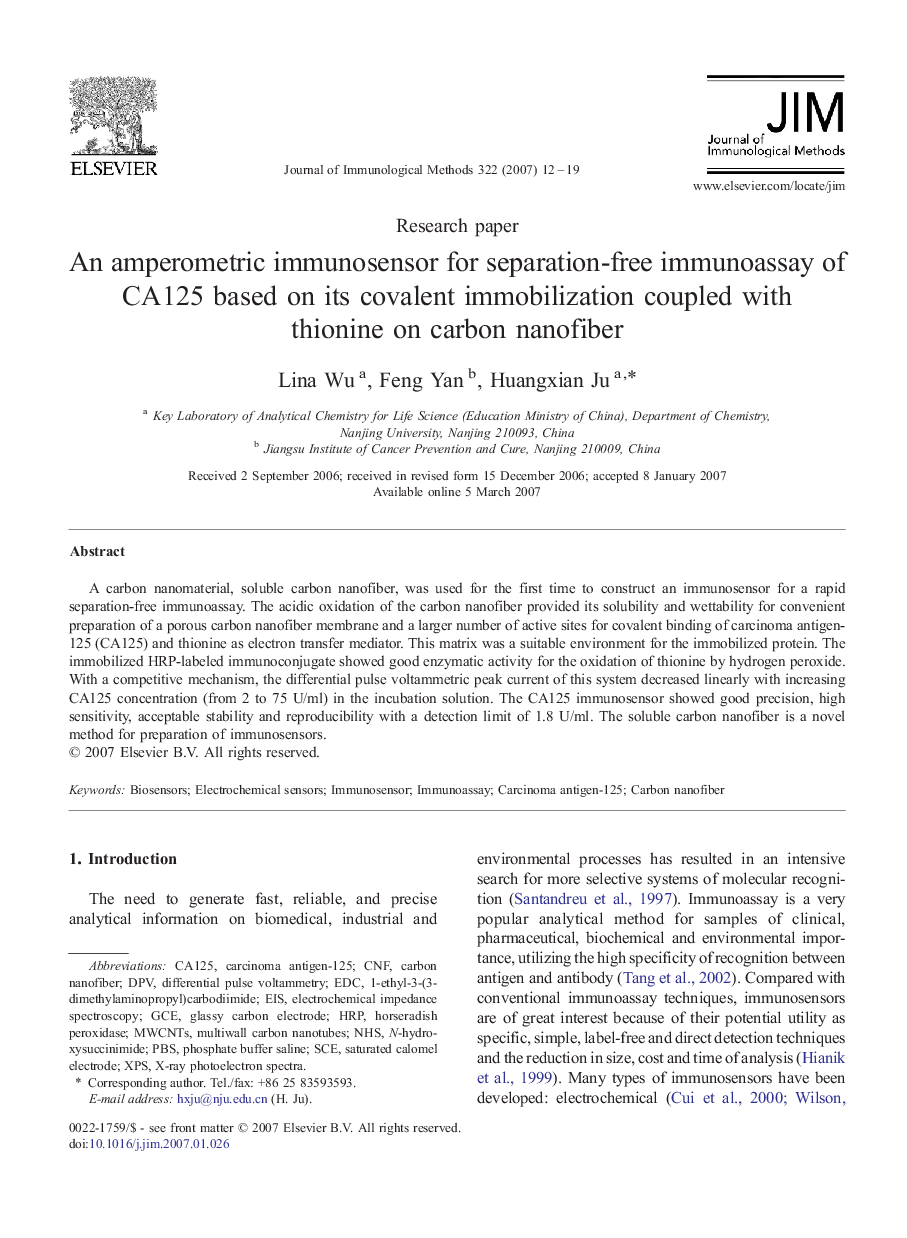| Article ID | Journal | Published Year | Pages | File Type |
|---|---|---|---|---|
| 2089081 | Journal of Immunological Methods | 2007 | 8 Pages |
A carbon nanomaterial, soluble carbon nanofiber, was used for the first time to construct an immunosensor for a rapid separation-free immunoassay. The acidic oxidation of the carbon nanofiber provided its solubility and wettability for convenient preparation of a porous carbon nanofiber membrane and a larger number of active sites for covalent binding of carcinoma antigen-125 (CA125) and thionine as electron transfer mediator. This matrix was a suitable environment for the immobilized protein. The immobilized HRP-labeled immunoconjugate showed good enzymatic activity for the oxidation of thionine by hydrogen peroxide. With a competitive mechanism, the differential pulse voltammetric peak current of this system decreased linearly with increasing CA125 concentration (from 2 to 75 U/ml) in the incubation solution. The CA125 immunosensor showed good precision, high sensitivity, acceptable stability and reproducibility with a detection limit of 1.8 U/ml. The soluble carbon nanofiber is a novel method for preparation of immunosensors.
